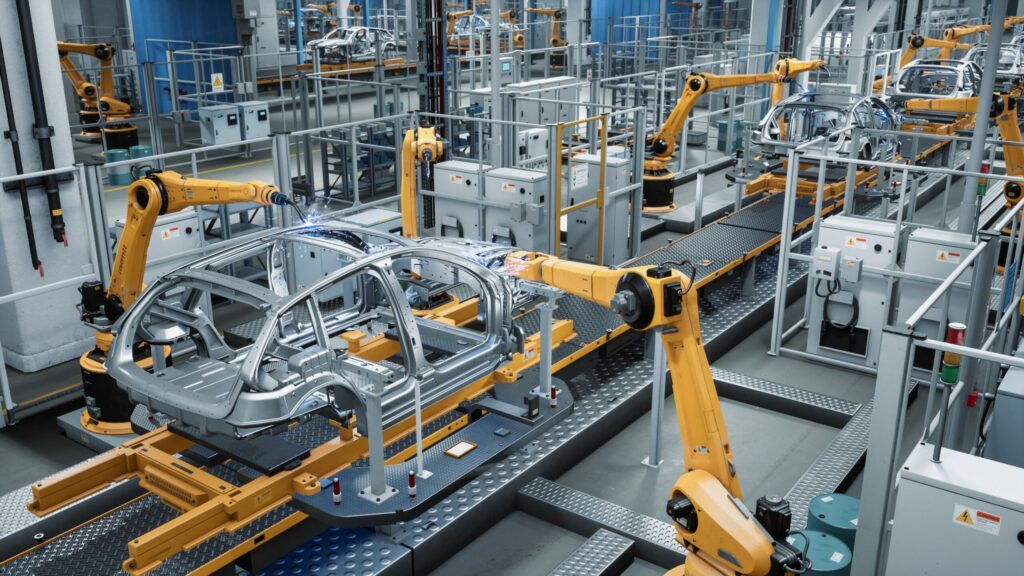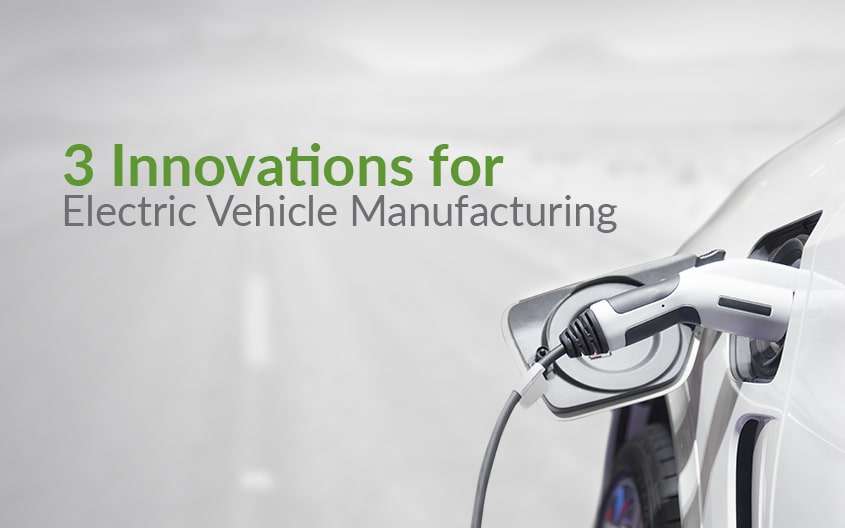In an era where electric cars are steering us towards an emission-free future, it’s worth getting a sneak peek into what goes on behind those automated factory doors. From the complex intricacies of building eco-friendly engines to the technology that packs power into a single battery cell, the manufacturing process of electric cars promises a captivating blend of innovation and industrial prowess. Gear up as we take a deep dive into the conceptual leaps and technical feats involved in delivering these green machines to the road. Buckle up, it’s going to be an electrifying journey.
Conceptual Designing: From Idea to Sketch

Car design starts in an artist’s imagination. It begins with an idea, a spark of inspiration, perhaps based on established notions or a revolutionary leap forward. The brainchild of an engineer or an industrial designer, this idea is the genesis of a new electric vehicle.
The process starts with a conceptual brief that outlines the car’s key characteristics, such as its target market, performance expectations, and price point. This profile helps guide the development process to ensure that the final car meets the needs of its intended buyers.
With the brief in hand, the design team then proceeds to brainstorming. Akin to creative artists in a studio, they sketch out various ideas, playing with shapes, lines, and forms. Some ideas are dismissed instantly—too radical, too pedestrian, too costly. But some sketches take on life. They get pinned up, discussed, critiqued, revised. Through this iterative process, the most compelling designs begin to emerge.
These sketches aren’t just two-dimensional artistic renderings, though. Concerns such as aerodynamics, customer comfort, and manufacturability all play a critical role in the design. The design also has to account for the unique needs of an electric powertrain, like battery packaging and electric motor placement. Due to the lack of a conventional petrol engine, electric cars can provide new opportunities in design, such as more interior space.
With the best conceptual designs shortlisted, the next stage is model creation. Traditionally, scale models are built from clay. But in today’s digital age, many design teams turn to advanced software to create detailed three-dimensional CAD (Computer-Aided Design) models. These virtual models allow engineers to move components around, test different designs, and visualize the car from any angle.
At the end of the conceptual design phase, the idea that started as a mere spark has now grown into a more concrete, detailed model. However, this is just one piece of the intricate jigsaw puzzle in the manufacturing process of electric cars—a puzzle that not only incorporates brilliant aesthetics but also robust engineering, careful assembly, strict quality control, and a keen eye on the future trends of the electric car industry. And as the subsequent stages reveal, the journey from the sketchpad to the streets is a fascinating one indeed.
Electric Car Components: A Detailed Overview

As we delve deeper into the construction of electric cars, let’s explore some of the essential components that set them apart from their gasoline counterparts. Following are the key constituents that define an electric vehicle (EV).
The most significant component of an electric car is undoubtedly the electric engine. This powerful motor, often on-par with a traditional combustion engine in terms of performance, uses magnetic fields to generate force. In EVs, the rule of thumb often is: the bigger the engine, the more power it can deliver, though advances in technology are continually redefining this paradigm.
Battery packs also play a crucial role in EVs. These high-capacity power storage units are what keep your car moving and directly impact its mileage. The technology involved in creating EV batteries is fascinating–it’s all about balancing performance capabilities, safety measures, and durability. Nickel-metal hydride (NiMH) and more commonly, lithium-ion batteries, bring the best combination of these qualities to the table, granting EVs an impressive range performance.
Another fascinating aspect of EVs is the regenerative braking system. Unlike conventional brakes, which create heat energy that is lost, EVs manage to convert much of the energy used in braking back into electrical power. This stylish piece of engineering extends the range and efficiency of EVs and constitutes an intriguing part of the overall design.
EVs also include an onboard charger, which takes care of converting the alternating current (AC) from a power source into direct current (DC) that the battery can use to charge. Moreover, a key thing to note about EVs’ charging systems is that they’re designed to work with a variety of power sources. This makes it possible to charge your EV almost anywhere you find a power outlet.
Electronic controllers can be considered as the brain of the EV. They regulate power distribution between the various components. Based on input from the driver (like accelerating or braking), these controllers decide how much power is needed by the motor, engaging the battery and the regenerative braking system accordingly.
Lastly, EVs incorporate thermal management systems to ensure that temperatures within the car, especially around the battery, remain within a safe range. These systems are crucial, not just for the protection of the car’s components and passengers, but also for maintaining optimal performance standards.
Understanding these fundamental components helps to appreciate the sophistication that goes into electric vehicles. Each component not only serves a specific purpose but works in synchrony with the entire system to provide a seamless and efficient riding experience. As technology advances, we can expect these components and systems to become even more advanced, efficient, and powerful.
The Production Line: Assembly and Quality Control

Fabricating an electric car isn’t exactly tantamount to a choreographed ballet, but it does require rigorous precision, nimble coordination, and uncompromising attention to detail. Imagine a vast chessboard, with automotive engineers calling the shots, and robots playing the pawns, bishops, and rooks, bringing myriad parts and pieces into seamless harmony.
Every electric vehicle starts the assembly process as just a bare-bones shell, or what the manufacturing types call the “body-in-white”. This skeletal structure rides on an assembly line conveyor, welcoming the delivery of parts that, over time, evolve into a complete vehicle. Just as an artist paints a picture or a chef creates a gourmet dish, the process is both systematic and creative, layering on piece after piece until the final creation emerges.
The electric powertrain, with the electric motor and the battery pack, is the unique piece de resistance for every electric car. These components are intricate, complex, and have a zero-tolerance policy for faults. Quality control for these elements is intense, and perhaps rivaling what you’d expect in a rocket science lab. It’s not just checking the components for any conspicuous defects, but it’s also about performing rigorous testing under various controlled situations to ensure operational efficiency under all conditions.
A successful assembly line is like an orchestra, humming along to a well-practiced symphony – in this case, of rivets and robots. Each worker and machine has a precisely calibrated role to play, and they’re all working in concert to churn a myriad of individual parts and meld them into a harmonious whole: a state-of-the-art electric vehicle.
But the magnum opus of an assembly line is not just the manufacturing of these zero-emission chariots, it’s the stringent and unwavering quality control mechanisms to which they’re subjected. There’s a barrage of tests with names that sound like they belong in a science fiction movie: the “water intrusion test”, the “roll-over test”, the “accelerated corrosion test”. Each test is a gauntlet, applied to weed out any possibility of a flaw creeping into these green machines. The electric cars that survive this strict scrutiny are the ones that make it onto the roads, into our garages, and hopefully, contribute to a future of cleaner, greener transportation.
So, when you look at an electric car, appreciate the journey it has had. From raw material to meticulous assembly and brutal quality tests, it’s a testament to cutting-edge engineering and unwavering commitment to quality. Fun isn’t something usually associated with the manufacturing process, but for the folks on the factory floor, seeing a spanking new electric car come off the line for the first time, it’s just like the thrill of the open road.
Safety Standards of Electric Cars

When we move any conversation to the topic of automobiles, safety is bound to be an integral part of the discourse. Especially with electric cars, securing their reliability is one of the prime objectives of manufacturers. The safety of an electric vehicle, much like its conventional counterpart, is anchored to two main aspects: the physical integrity of the vehicle in the event of an accident, and the safe operation of its electrical components.
It’s not surprising that electric cars undergo the same stringent safety tests as gasoline-powered cars. Collision tests for front, side, and rear, rollover tests, and even pedestrian safety tests are all part of this rigorous process. The bodies are crafted with crumple zones to absorb impact, advanced airbag systems are installed, and measures are taken to ensure passenger compartments stay intact in collisions.
However, where electric cars require additional safety measures is in handling their high-voltage electrical systems. Let’s not overlook that we are talking about batteries here that may pack as much as 400 volts, requiring a very different safety approach than the conventional 12-volt system we are accustomed to in gasoline cars.
Manufacturers are dedicated to ensuring that all electrical components are critically protected. In an event of a collision, safety disconnects are designed to cut off the power supply. Furthermore, the batteries and electrical systems are securely placed at protected locations, typically in the floor, to reduce the risk of any damage. Battery technology also plays a crucial role in safety. Rigorously tested lithium-ion batteries are generally the pick, given their impressive energy density and thermal runaway resistance.
But safety isn’t locked within the steel casings. Safety of electric cars extends to the software too. With electric cars featuring advanced driver-assist technologies, the software itself warrants concern. For this, validation and verification processes are vital to ensure the software’s functionality, performance and, ultimately, its safety.
Overall, every aspect of an electric car, from the rigidity of its structure to the accuracy of its software, is designed towards adhering to stringent safety standards. Although this might sound like an arduous process, these continuous and meticulous checks contribute towards a safer and more sustainable future for the automotive industry.
Future Trends in Electric Car Manufacturing

There is no doubt that the electric car manufacturing industry is on a rapid growth trajectory. Future trends that resonate within the industry range from technological advancements to increased sustainability measures. Here’s a rundown of some of the key trends likely to shape the electric car manufacturing scene in the future.
Firstly, there’s battery technology, the heart of every electric vehicle. We’ll likely see continued improvements in lithium-ion batteries, increasing their energy density drastically and thereby extending driving range. There also exists the potential for solid-state batteries to take center-stage, with their potential for greater safety and performance.
Another key trend is the implementation of lightweight materials. Manufacturers are always on a quest to reduce the weight of electric cars to improve their energy efficiency. Expect more use of carbon fibre, lightweight metals, and advanced plastics in various components of electric cars to reduce weight without compromising on strength and safety.
Improved charging infrastructure is another area to watch. As electric cars continue to grow in popularity, infrastructure must follow suit. On-the-go charging methods, such as inductive charging systems embedded in roadways, and ultra-fast charging stations are being explored – with the goal of making charging as seamless as refueling presently is for fossil fuel cars.
On the topic of manufacturing efficiency, Industry 4.0 technologies will also play a big role. Robotics, automation, and smart technologies are set to streamline the production process, increase precision, and lower production costs, making electric vehicles more affordable for the mass market. We can also expect to see more ‘gigafactories’ – very large factories capable of mass production – springing up around the world.
Finally, there’s sustainability, which is becoming integral in all aspects of car manufacturing. The process of manufacturing electric vehicles will continue to evolve to reduce environmental footprint, from sourcing eco-friendlier raw materials, adopting energy-efficient production processes, to the end of life management of the vehicles, including recycling and reuse of old car batteries.
These trends reveal that the future of electric car manufacturing isn’t just about producing environmentally friendly vehicles, but also about making the manufacturing processes as sustainable, efficient, and technologically advanced as possible. The aim is clear: to drive the world towards a cleaner, sustainable future where electric cars are the norm rather than the exception.
FAQs
How does the manufacturing process of electric cars differ from the ones that run on fossil fuels?
What is the core component of electric cars that sets it apart from traditional cars?
Is it true that producing electric cars causes more emissions than producing traditional cars?
Conclusion
As the future of automotive industry, electric cars carry great potential and promise. But their production isn’t enchantment or trickery, it’s the consequence of innovative design, precise engineering, and meticulous assembly. It is an intricate blend of tradition and technology, with each detail, every bolt and cable, contributing to a cleaner, greener, revolutionary transportation mode. As we navigate this pivotal change, let’s appreciate the sophistication behind the birth of each electric car, and the concerted effort to shift towards an eco-friendlier world.
